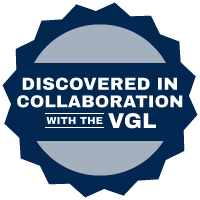Quick Summary
Click here for Price and Turnaround Time
A DNA profile of species-specific microsatellite markers is obtained from the offspring, potential dam, and potential sire(s), and parentage analysis is performed using this data. In this process, a computer program compares the DNA profile of the offspring to the profiles of the presumed parents. Candidate sires and dams may either qualify or be excluded as parents based on whether they share microsatellite marker alleles with the offspring. A parentage analyst then reviews the results and sends the final report. If a listed parent or parents are excluded, additional analysis is performed, including retesting of samples and the possible use of additional DNA markers to confirm the exclusion.
You can read more about the process of DNA parentage analysis HERE.
Sample Collection
Dog DNA tests are carried out using cells brushed from your dog's cheeks and gums. The preferred cytology brushes are sent to you by mail, or you may provide your own brushes. For accepted alternative brushes, click here
We recommend waiting until puppies are at least three weeks old before testing.

Step-By-Step:
- Make sure the dog has not had anything to eat or drink for at least 1 hour prior to collecting sample.
- When swabbing puppies, isolate each puppy from the mother, littermates and any shared toys for 1 hour prior to swabbing. Puppies should not have nursed or eaten for 1 hour prior to collecting sample.
- If collecting samples from more than one dog, make sure to sample one dog at a time and wash your hands before swabbing another dog.
- Label brush sleeve with name or ID of dog to be sampled.
- Open brush sleeve by arrow and remove one brush by its handle.
- Place bristle head between the dog’s gums and cheek and press lightly on the outside of the cheek while rubbing or rotating the brush back and forth for 15 seconds.
- Wave the brush in the air for 20 seconds to air dry.
- Insert brush back into sleeve.
- Repeat steps 5 - 8 for each unused brush in sleeve on a fresh area of cheek and gums. Make sure to use and return all brushes sent by the VGL. In most cases, it will be 3 brushes per dog. If using interdental gum brushes, please note that the VGL requires 4 brushes per dog and only moderate or wide interdental gum brushes are accepted.
- Do not seal brushes in sleeve.
- Place all samples in an envelope and return to the address provided.
ATTENTION:
- Do not collect saliva/drool – the key to obtaining a good sample is getting cheek cells on the swab
- Do not rub swab on the dog’s tongue or teeth – this will result in poor quality sample
- Do not collect a sample from a puppy that has recently nursed – the mother’s genetic material can rub off on the puppy’s mouth and contaminate the sample
In dogs, the following microsatellite markers are reported:
AHT121
LEI004
AHT137
INU030
REN169O18
REN169D01
INU055
FH2848
REN105L03
AHTh260
REN247M23
AHTk211
INU005
AHTH130
REN64E19
REN162C04
AHTk253
C22.279
FH2001
FH2054
INRA21
AHTh171-A
REN54P11

 Parentage/Genetic Marker Report
Parentage/Genetic Marker Report